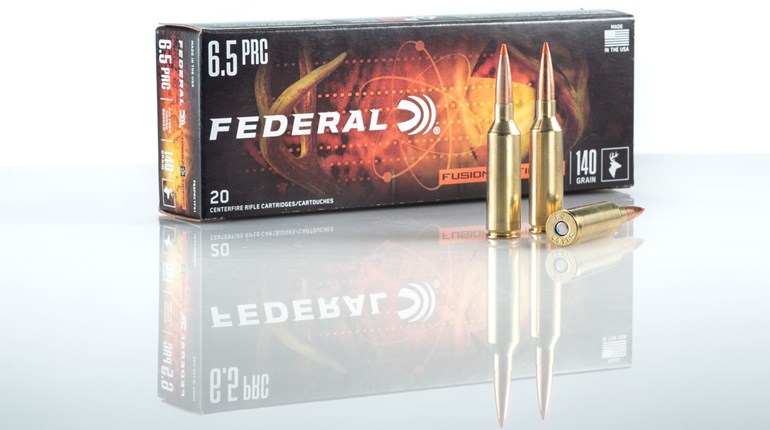
Townsend Whelen was quoted as saying “Only accurate rifles are interesting.” I don’t know if I agree, but then accuracy is difficult to define. A lever-action rifle in a 19th-century cartridge is probably accurate if it can hold 2 MOA at 100 yards. For years, our standard for a bolt-action has been 1 MOA, but a true and solid definition of accuracy has been elusive. I am not talking about a benchrest rail gun where you have 50 pounds of gun locked to a table, but rifleman’s rifles—guns you the shooter operate. I think accuracy is like art; you recognize it when you see it, and when you meet a rifle that redefines everything you thought you knew about accuracy, well, that is an interesting rifle.

I may have found my white whale, as I finally own a rifle for which I don’t feel I have been able to achieve its potential. That’s because my influence as a shooter is the wild card that may be preventing the gun from achieving peak performance. Perhaps that is the true definition of accuracy.

For a good shooter—and most rifles—the variables can be minimized to the point of statistical irrelevance. If your gun is capable of 1 MOA and you can hold to .2 MOA, you are only influencing the outcome by a maximum of 20 percent and probably an average that’s something closer to 5 percent. But if your rifle is capable of .2-MOA accuracy and your shooting ability is the same, it has a much more drastic effect on the numbers.
I have met only a few rifles in my life for which I believed I was a spoiler in the group averages. My new precision long-range rifle chambered in 6.5 Creedmoor is one of those rifles. Each time I take it to the range, I learn a bit more and the gap shrinks. But right now, I believe I have yet to explore the extreme limits of this gun’s accuracy.

I think with time I will see an average of five, five-shot groups from this rifle that is close to .25 inch at 100 yards. Not a single cherry-picked group, mind you, but an average of five, five-shot groups.
While the Internet is full of braggarts who own guns that shoot that well, I have found them extremely rare in reality. I have been a gunwriter for more than 30 years and a shooter for closer to 50. I have had more than 1,000 guns pass through my hands, about half of them rifles, and I can’t remember ever having one that was honestly capable of such accuracy. I still don’t, but I believe I am close.
The 100-yard groups reported in this article are from my first time out with the gun, it was not even broken in and we were just getting acquainted. It’s still very new to me, but a few days ago I shot a group at 200 yards to confirm my zero. That three-shot group measured .4 inch. That translates to .2 MOA. It’s these flashes of brilliance that keep occurring with this rifle that make me suspect its capabilities are downright astonishing.

It all started when I was talking with my buddy Todd Seigmund at the 2014 SHOT Show. Seigmund is one of those guys who has been there and done that. He served in the Army, was a security contractor in the sandbox, a 3-gun shooter and a precision-rifle competitor. He has kicked around the gun industry a bit, working for some big names like Remington and today he owns his own PR agency. One of his clients is Accuracy International—the company that built the rifle that set the record for the longest sniper kill shot in history. AI had a new chassis system it introduced at the show, and I mentioned that I was thinking of getting a long-range precision rifle. You know how it is with gun guys; one thing led to another and suddenly I was having a rifle built.

The Accuracy International AXAICS Chassis has a folding rear buttstock, so the gun can be shortened for transport or storage. This also allows removing the bolt without lowering the adjustable cheekpiece. The stock is adjustable for length-of-pull and the buttpad can be raised, lowered or canted. There is a removable pad to support the rear of the rifle. The pistol grip uses a removable backstrap, so you can fine-tune your grip and the distance to the trigger. This thing has so many adjustments, it can be tuned to fit any shooter precisely.

The chassis comes with plenty of locations for sling attachment, both via QD swivels or a loop. There are rails at several locations on the fore-end, including one on the bottom with a sling swivel to attach a bipod. The AI chassis can be ordered with an integrated rail-type base for mounting optics and uses the AI detachable magazines that have become a standard in the industry. My chassis was designed to fit a Remington Model 700 short action, so it can be a great upgrade to your existing rifle, as well as a foundation for building a new one.
I ordered a Defiance Stryker Ridge action sold exclusively by Brownells. This action fits in Remington 700-style furniture, so it was a good match with the chassis. It has a one-piece bolt with an M16-style extractor, and everything is built with the precision necessary to create an accurate rifle.

Meanwhile, Seigmund went to work with his contacts. He suggested a Bartlein barrel, and I am glad he did. This is one of the best-shooting and easiest-cleaning barrels I have ever owned. According to Bartlein, its single-point rifling machines are so accurate, the company can hold tolerance on the twist rate to one ten-thousandth of an inch (that’s .0001 inch, folks). This is mind-blowing precision. The company uses single-point cut rifling because it is an extremely stress-free way to rifle a barrel, as well as making it easier to hold extremely tight tolerances.
A rifle for long-range, precision shooting must maintain its accuracy, even with the barrel smoking hot. There is no time to wait for it to cool in a match or a tactical situation. The reason the point-of-impact shifts as a rifle heats has to do with stress on the barrel. As metal heats, it moves and shifts due to that stress and tries to revert back to its former shape. There are a few methods to relieve a barrel during manufacture, but the best approach is not to introduce stress from the start.

Bartlein laps the barrels before and after rifling for precision and a smooth finish. I’ll confess, I didn’t do a break-in process—I just shot the rifle. The first session was probably about 50 rounds. When I cleaned the barrel, there was almost no copper fouling, even though it was brand new and barrels always have some rough edges to start. Well, every barrel I’ve shot other than this one, that is.
This kind of precision in tolerance and finish is a big part of the accuracy puzzle. There are a lot of important considerations in building an accurate rifle, but the barrel is the foundation. If you don’t have a good barrel, the rest is moot. Clearly, this Bartlein is a good barrel.

Another important part of any build is the guy who puts it all together. I have a lathe and can install rifle barrels, but I am a mere hacker—an amateur who dabbles. The best components in the world are only as good as the machinist who builds the gun. You can build a house out of the best mahogany, but if the carpenter nails it together crooked, it’s going to be an ugly house. It’s the same with guns, only at a much more precise level. Lots of guys can build guns, but not a lot of guys can build a gun that shoots like this one.
Seigmund hooked me up with Dave Tooley at Tooley Custom Rifles and told me he was the best in the business for building precision long-range rifles. Nothing I have seen in this rifle argues against that statement. Tooley did a remarkable job of building this rifle and he is a truly impressive craftsman.
He also fitted an XTSP Super Single trigger. This trigger breaks clean and crisp at 1 pound, 10.6 ounces precisely, exactly, every time. The trigger is adjustable, but why? I prefer a trigger that is 1.5 to 2 pounds for long-range shooting. Any lighter, and I have a hard time feeling it enough to control the break.

If you are going to do precise long-range shooting, you need good glass. I topped the gun with Leupold’s 34 mm, V6 4-24x52 mm scope with the T-MOA reticle in Leupold mounts. This scope is brilliantly clear. Of course there is a side focus to adjust parallax, which is critical for long-range precision. I prefer a second-focal-plane, MOA reticle because I know and understand MOA best, so it’s intuitive for me, while the second-focal-plane reticle keeps the aiming point small enough for precision work at long range. I range with a laser and almost always shoot at long range on full magnification, so it works well for me, though I know most long-range marksmen prefer first-focal-plane, mil-based reticles.
I also prefer the holdover style of shooting most of the time. Dial up has its place, but for the majority of my long-range shooting, I find holdover faster, much less complicated and far less prone to mistakes. I can holdover with this rifle and cartridge to 800 yards with my current 200-yard zero. If I make changes to the zero, I can use the scope and the holdover method out to 1,000 yards.

The cartridge is capable of hitting targets farther than that, and I have shot other 6.5 Creedmoor rifles at 1,400 yards, but 1,000 yards is likely the practical limit for target shooting. For hunting, the 140-grain bullet drops to less than 1,000 ft.-lbs. of energy around 600 yards. Velocity slows to less than the 2,000-fps threshold needed for bullet expansion just short of 500 yards. Therefore, the practical limits of hunting with this rifle are within the holdover capabilities of the scope.
So far, I have only shot factory ammo. The gun really likes Hornady and Nosler loads, and both manufacturers have outstanding options in 6.5 Creedmoor. I am an unrepentant handloader, and I’ll be working with handloads to try and tweak a bit more accuracy out of the gun—if that’s possible. I think it is.
This rifle is no safe queen—it is a gun that was made to be shot. If nothing else, reloading significantly reduces the cost of ammo and allows more shooting per dollar spent. Long-range shooting is addictive. I love shooting for the sheer joy of placing a bullet with precision on a target so far away you almost can’t believe it can be done. My preferred targets are made of steel. When that clang reaches your ears after an impossible length of time, it’s the most satisfying feeling on earth.

 6.5 Creedmoor
6.5 Creedmoor
When the creative people at ammo companies actually spend time pulling triggers, good things can happen. During the 2007 Camp Perry matches, Hornady engineer Dave Emary and High Power National Champion Dennis DeMille were talking about the 6.5 mm wildcat cartridges that were becoming popular in the sport. As can happen with any wildcat cartridge in the hands of shooters who think they can beat the laws of physics, the lack of standardization was leading to problems. They thought it would be great if there was a cartridge that followed current popular design, was accurate enough to win and was available from a commercial ammunition manufacturer. So, Emary and fellow Hornady engineer Joe Thielen pooled their talents and in 2008 announced a new Hornady cartridge designed for long-range shooting called the 6.5 Creedmoor.

The 6.5 Creedmoor can trace its roots back to an odd parentage; one far from the long-range shooting game. The .307 Win. was introduced in 1982 and was designed for the lever-action Winchester Model 94 rifle—not exactly 1,000-yard competition ready. The .307 Win. never achieved much success, and it is no longer chambered in any commercially manufactured rifles. However, that case was used to make the .30 TC, which was introduced in 2007. Thompson/Center had commissioned Hornady to design a proprietary .30-caliber cartridge for the introduction of its bolt-action Icon rifle. Emary used the .307 Win. case, although it was modified and modernized. The case was shortened, the thick case walls thinned and the rim removed. The result was the .30 TC. When necked down to take a .264-inch bullet, the .30 TC gave birth to the 6.5 Creedmoor.
Emary said the cartridge was designed around the 140-grain A-Max bullet preferred by long-range target shooters. Engineers looked at a few other short-action .264-caliber cartridges and made some changes to the chamber-throat angle and other specifications to accommodate a long-ogive, high-ballistic-coefficient (BC) bullet of that weight. As a result, Hornady was able to extract better long-range performance than is commonly seen from other 6.5 mm short-action cartridges.
This cartridge has become popular in precision rifles, performing better than any other standardized short-action cartridge. The high BC keeps the bullet supersonic out well past 1,000 yards—under the right conditions out as far as 1,300 yards.
Hornady offers five different loads: two 120-grain, two 129-grain and a 140-grain A-Max. The 140-grain A-Max is the king for long-range work. It is, after all, the bullet around which the cartridge was designed. Nosler has two 140-grain loads, a Ballistic Tip and a HP match bullet. As with all Nosler offerings, they are excellent performers.






































